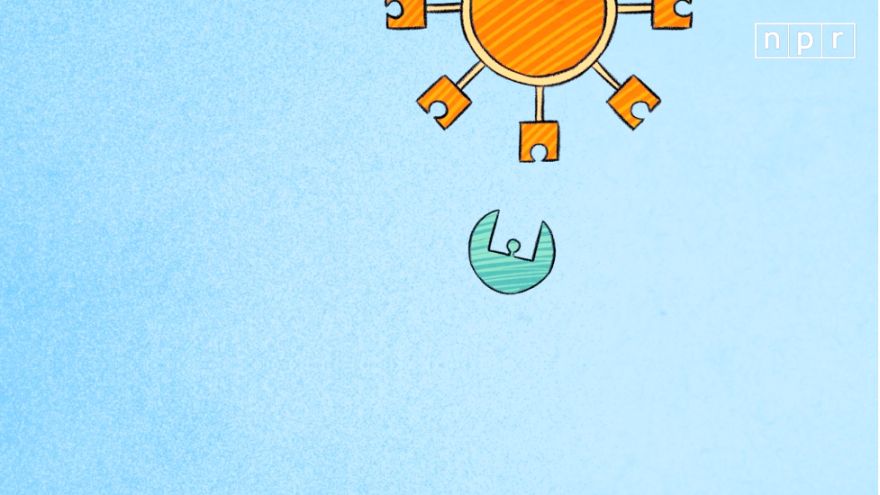The world is very worried about coronavirus variants.
As the virus mutates — which all viruses do — variant strains emerge. Some of these variants are more effective at infecting humans and may even cause more severe disease.
Variants that appear to fall into this category have been identified in Brazil, South Africa, the United Kingdom — and now India. And in an interconnected world, they can spread from one country to another.
How does a mutated version of the virus improve its chances of being transmitted to humans? If you imagine viruses as puzzle pieces, as this video does, that can help explain what is happening when a coronavirus variant comes into contact with human cells.
This illustrated guide and video can help:
Why are some coronavirus variants more contagious – and possibly more deadly?

To answer this question, let's go back in time to January 2020. Back then, the coronavirus looked a bit like this, a ball with little "spikes" on the surface poking out. Well, not really, but if it was made of puzzle pieces, it would look like this:

Our cells go to great lengths to keep intruders out. For anything to enter, the intruder must figure out a way for its spike to bind to another spike on the cell's surface.
The binding is like a secret handshake. The handshake tells the cell, "Oh, it's OK. We can let this guy inside."
That's exactly what SARS CoV-2 has done. Sometime in 2019, probably in China, it figured out a way to interact with a specific "spike" on the surface of human cells. This interaction wasn't perfect.

But the binding was good enough to trick the cell's receptor. And the receptor — mistakenly — told its cell, "Hey cell, this guy is friendly. You can let him in." Ooooh. Big mistake.

Once the virus was inside, it made a bunch of copies of itself, busted the cell wide open and released new virus particles inside the blood, which went out and found another cell to infect.

During this time, the body isn't standing by idly letting this attack occur. Oh, no. The immune system is already preparing a counterattack. It's manufacturing antibodies. Some of those antibodies act like little caps that stick to the ends of the virus' spike, like this.

Once "capped," the spikes can no longer stick to the cell's receptor. The infection can't move forward, and the body wins!

That was pretty much how coronavirus infections played out for nine months or so, until September 2020. Then ... the virus got crafty.
Every time the virus copies itself inside a cell, it has the chance of mutating, or changing its genes slightly. Most of the mutations are actually harmful to the virus. They disable it. So these mutations disappear.

But every so often, the virus happens upon a set of mutations that actually help the virus.

In the case of the new variants, the mutations change the shape of the virus's spike in a particular way — so that it fits better to the ACE2 receptor. So the spike can bind more tightly to the cell or more quickly.

The result? A person's cells get infected more easily — or more of their cells let the virus inside.
We don't really know why, but that person may make more virus particles inside their nose and upper respiratory system. So when they sneeze, cough or just talk, they expel more virus. And that's likely why the new variant is more contagious.

But wait, what about the antibodies? What about the little caps on the spike? Aren't they coming to save us again?
Well, yes ... and no.
Turns out, some of the mutations change the shape of the virus's spike in a way that's double trouble for the cell. Some antibodies no longer fit well to the end of the spike, so they can't form the little caps that block viral infection.

Watch the whole video here:
Copyright 2021 NPR. To see more, visit https://www.npr.org.




